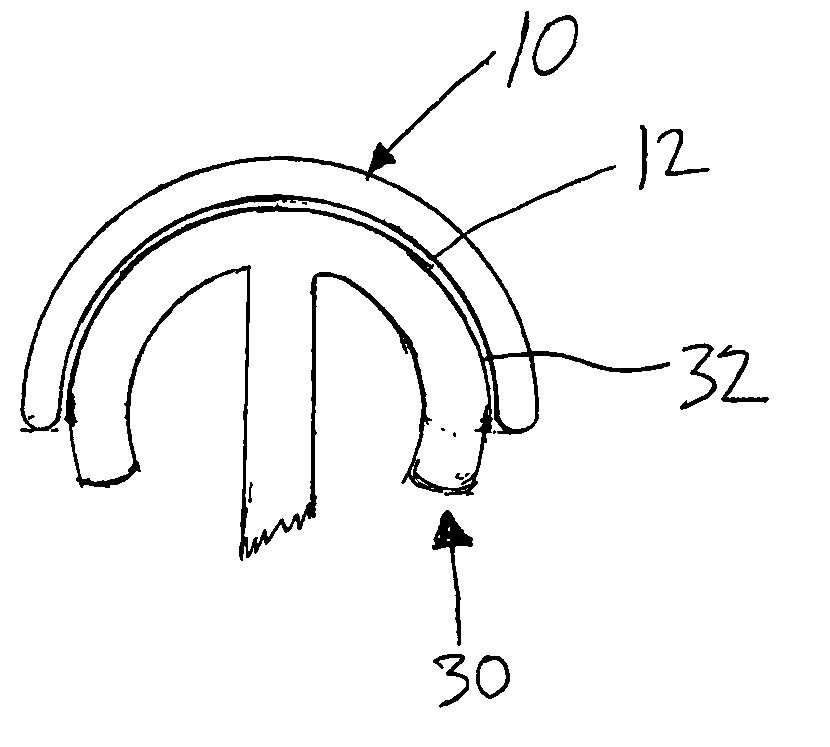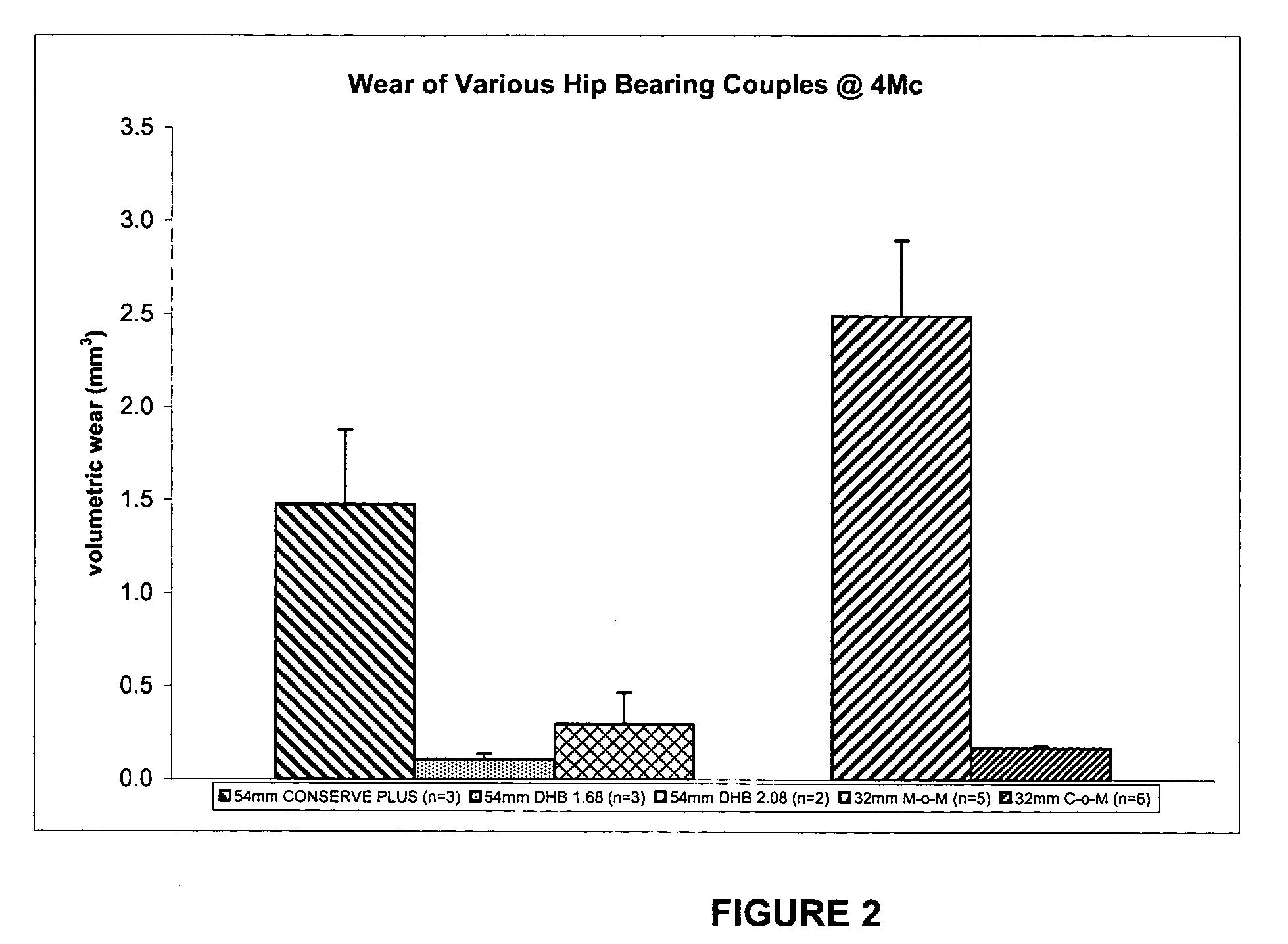Metallic bearings for joint replacement
a technology of metal bearings and joint replacement, which is applied in the field of orthopaedic prostheses, can solve the problems of bearing surface wear, bearing component wear, and loss of minute particles from the bearing surface, and achieve the effect of reducing wear
- Summary
- Abstract
- Description
- Claims
- Application Information
AI Technical Summary
Benefits of technology
Problems solved by technology
Method used
Image
Examples
Embodiment Construction
[0023] In the following detailed description of the preferred embodiments, reference is made to the accompanying drawings which form a part hereof, and in which are shown by way of illustration specific embodiments in which the invention may be practiced. It is to be understood that other embodiments may be utilized and structural changes may be made without departing from the scope of the present invention.
[0024] The invention is an orthopedic joint prosthesis in which the material of one of the bearing surfaces is a metal material and the material of the other bearing surface is a metal material having a different hardness than that of the other bearing surface. For the sake of consistency and clarity in the discussion of this invention, the bearing surface having the softer metal will be referred to as the “soft metal bearing surface,” while the bearing surface comprising the harder metal will be referred to as the “hard metal bearing surface.” Of course “soft” and “hard” metal ...
PUM
| Property | Measurement | Unit |
|---|---|---|
| diameter | aaaaa | aaaaa |
| diameter | aaaaa | aaaaa |
| hardness | aaaaa | aaaaa |
Abstract
Description
Claims
Application Information
 Login to View More
Login to View More - R&D
- Intellectual Property
- Life Sciences
- Materials
- Tech Scout
- Unparalleled Data Quality
- Higher Quality Content
- 60% Fewer Hallucinations
Browse by: Latest US Patents, China's latest patents, Technical Efficacy Thesaurus, Application Domain, Technology Topic, Popular Technical Reports.
© 2025 PatSnap. All rights reserved.Legal|Privacy policy|Modern Slavery Act Transparency Statement|Sitemap|About US| Contact US: help@patsnap.com



